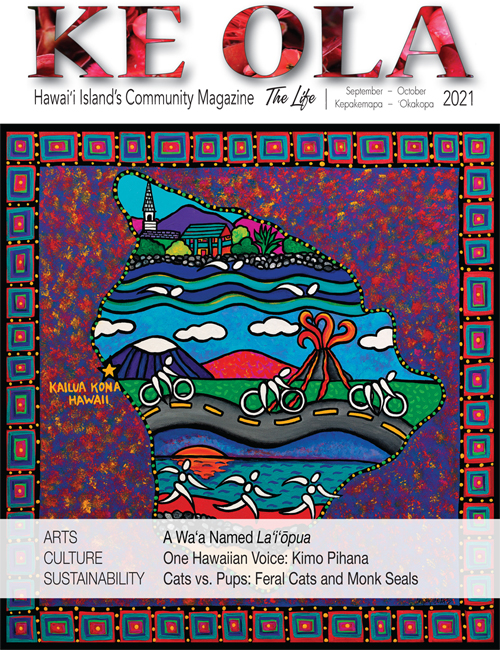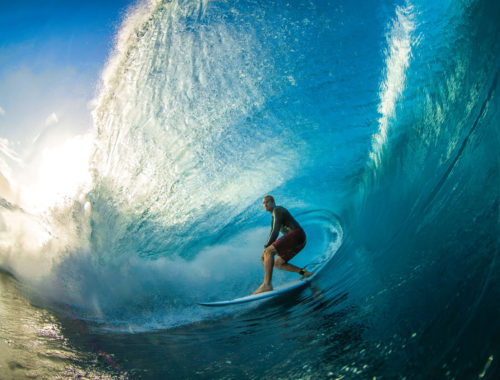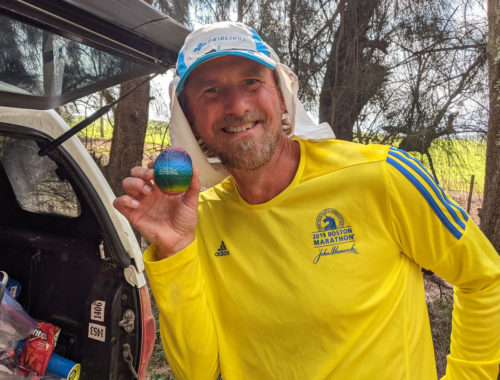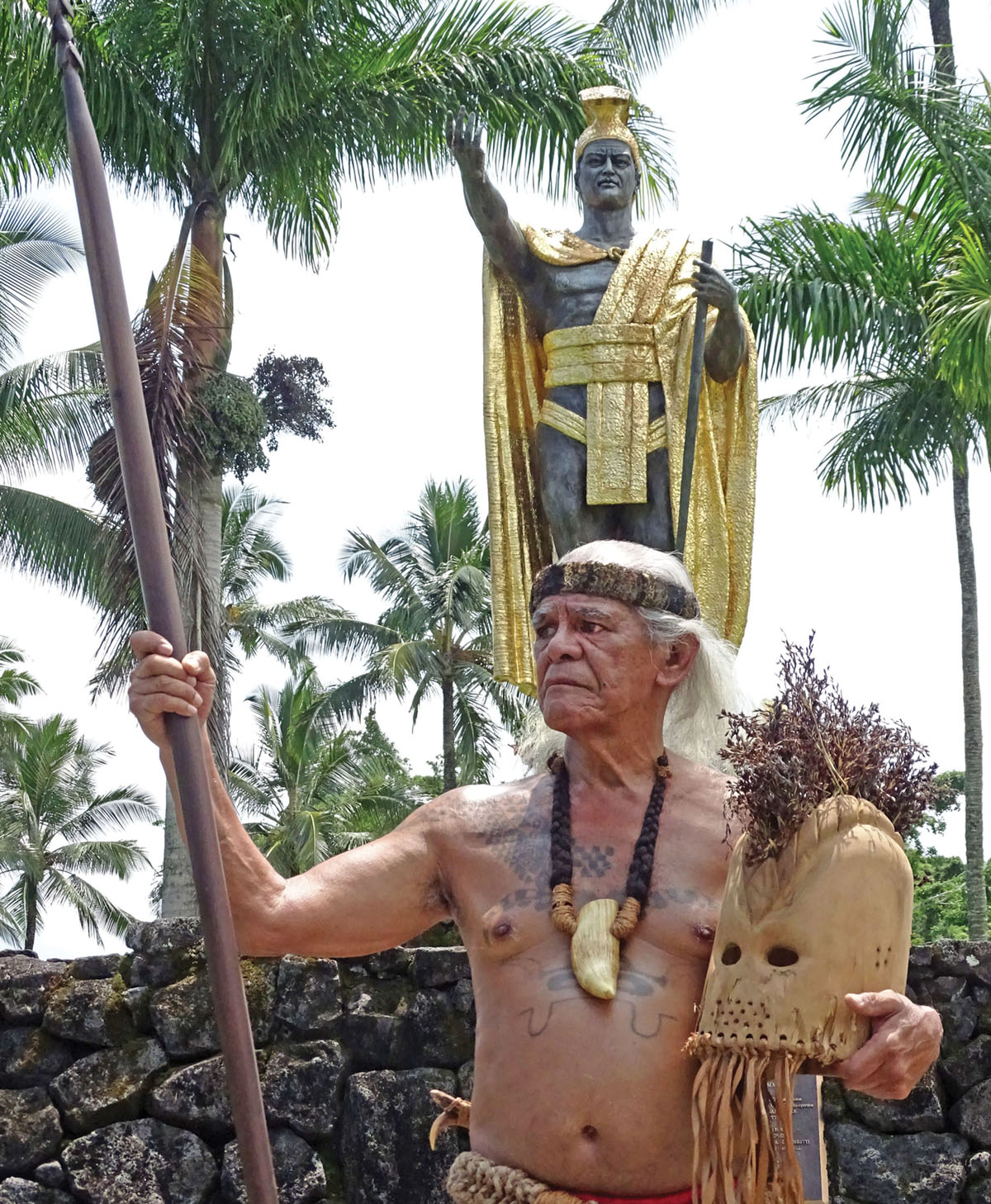
One Hawaiian Voice: Kimo Pihana

By Karen Valentine
It is truly rare to know a pure-blood kanaka ma‘oli (native) today, as most Hawaiian koko (blood) is mixed with that of many other heritages. Kimo Keli‘i Ka‘aha‘aina Pihana is a 100-percent Hawaiian man.
Much of Kimo’s identity was hidden from him while growing up on a farm in Wahiawā, O‘ahu during the 1940s and ‘50s. He was known as James. His parents spoke some ‘ōlelo Hawai‘i (Hawaiian) at home, but he wasn’t allowed to speak it at school. English was the accepted language, and native Hawaiians were shamed as being uncivilized. There was even a law prohibiting naming a child with a Hawaiian name.
“Until the law was repealed in 1967, all Hawaiian children had to have Christian first names, according to the 1860 Act to Regulate Names, signed by King Kamehameha IV,” says Kimo. “So I am James Keli‘i Pihana. James in Hawaiian is Kimo, which I prefer. At school I was punished many times for speaking Hawaiian. My parents told me to start learning English and shut my mouth so I wouldn’t get punished by my teacher. I did exactly what they told me and grew up as a native Hawaiian who wasn’t allowed to speak my native tongue.”
It has been a lifelong journey for Kimo to embrace his true identity. It’s been challenging and painful at times.
“The attitudes of society when I was growing up made me feel ashamed to be Hawaiian. Things are somewhat better today. But as Hawaiians, we have been steadily losing our culture for a couple hundred years. We have each walked our own path through this vale of tears. No one speaks for all Hawaiians.”
Living a life close to the land—raising animals, fishing, and planting crops—Kimo learned to work hard to help his family. Their sustenance came from the land; however, some cash was needed, so he joined the US Merchant Marine. Soon after, he was drafted into the US Army and shipped off to the Vietnam War, where he sustained multiple life-threatening injuries as well as psychological trauma. He served in an all-Hawaiian squadron and was one of the few survivors.
“I have had problems with alcohol and PTSD since the war. It is still difficult to deal with.”
Kimo’s first wife, Christa, died, leaving him a grieving widower with their daughter, U‘ilani. He left his job at a petroleum refinery and got back to basics, moving back to his family farm.
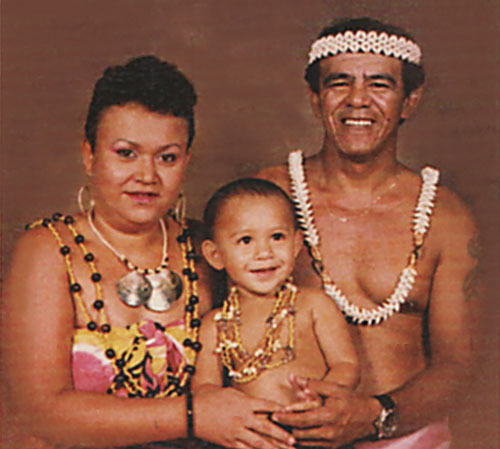
“My niece, Stella Pihana, was involved with a Hawaiian organization. One day she asked, ‘What are you doing for the culture, Uncle?ʻ That question got to me, right in my heart. I started to think about my life, night after night, looking up at the stars, wondering what they were telling me? I would think of those kanaka ma‘oli in canoes a thousand years ago. They didn’t need radar or gyroscopes or electronic equipment like we used in the Merchant Marine. They would exist for weeks in tiny canoes, following the stars.”
Kimo’s journey to understand his culture was enhanced when he married a woman with Marquesan and Tahitian ancestry. Leila Pihana is an artist of tatau (tattoo) who speaks five languages. They had a son, Moana, and have been married for more than 30 years.
At one point Leila left for Tahiti with their son. Kimo followed, meeting her family in the South Pacific. There he came to recognize the connection between the Tahitians and Hawaiians.
“Here is what I learned: when the first people came from the Marquesas, Fiji, Tahiti, Tonga, Samoa, and New Zealand, they all introduced new customs that caused conflict with the people already here. When the canoes stopped coming from those islands after hundreds of years, there was a mix of people who became the ‘firstʻ Hawaiians. They were already a mixed culture.”
Kimo’s midlife questions led him to move to Hawai‘i Island and join a group fighting for Hawaiian issues. Little did “James” know then that he was descended from King Kamehameha I.
“We were activists for the Hawaiian culture, not terrorists. We were out to make a point about fairness for Hawaiians, about how the revenues from ceded lands should go to help the Hawaiian people and many other things. We were culture warriors. Yet I needed to get more of the Hawaiian culture under my belt. For example, I wanted to learn Hawaiian martial arts and was able to begin to do that at Waipi‘o Valley and Pu‘ukoholā. There I found people who could teach me how to start to live in—and believe in—the Hawaiian culture.”
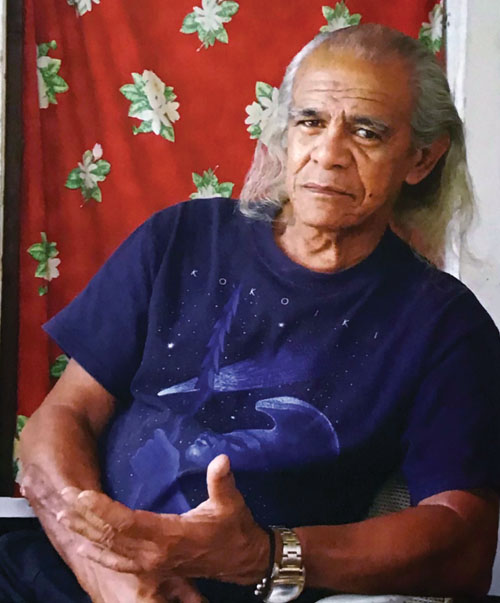
Kimo was given his first official Hawaiian malo (male garment) at the annual ceremonial festivities at Pu‘ukoholā heiau by Kahuna Nui John Lake as he was initiated into Nā Koa of Pu‘ukoholā. “Nā Koa are warriors,” he says, “protectors of the culture. I learned many old skills, customs, and ceremonies—skills that enabled ancient Hawaiians to live off the land, survive, and be self-sufficient. The activities gave me a clear focus. My mid-life crisis was over and I became mentally stronger. I became a proud Hawaiian. I was very humbled. It was like being born into the Hawaiian culture, even though Iʻve got my identity in my bones. From there, I got involved with all kinds of Hawaiian issues.
“Ahhh, I didn’t have to feel ashamed to be Hawaiian anymore.”
Kimo credits revered kūpuna, kumu hula, and professor of cultural wisdom, Pua Kanaka‘ole Kanahele, with taking him under her wing and mentoring him for several decades, during which they participated together in activism.
“She was able to tell us how we, as Hawaiian men, should conduct ourselves, and she taught us not to fear, saying, ‘Your kūpuna are behind you.’”
Kimo proudly dons a signature red malo to represent his culture at many public events: parades, demonstrations, and cultural festivals. It represents a link to a sophisticated culture that was attempted to be quashed by missionaries and an illegal overthrow of the Hawaiian monarchy in 1893.
“My malo is symbolic. When I wear my malo, I am not saying we should go back to the old ways and live in grass shacks. I feel we should honor what is valuable in our culture, help others to honor it, and also adapt to the modern world.”
Qualified by his ancestral lineage, Kimo was appointed to the Royal Order of Kamehameha and other honorary organizations.
Here is just a partial list of the issues Kimo either led or participated in:
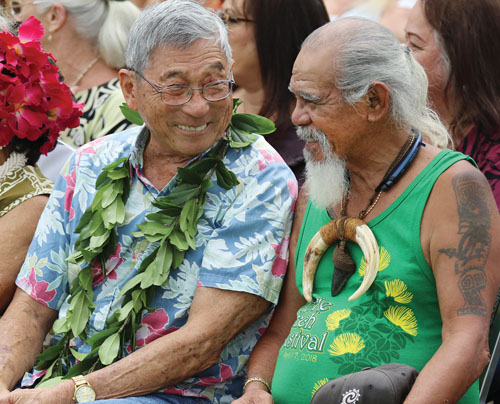
- Obtaining signatures against the proposed missile launch pads on Kaua‘i.
- Generating support for the Apology Bill signed by President Clinton in 1993 and participating in the signing ceremony by Governor John Waihe‘e.
- Working with his wife Leila in helping with homelessness.
- Arrested attempting to bring attention to duty-free revenues at HNL airport which the group felt should have been benefitting Hawaiians.
These activities were a precursor to Kimoʻs involvement with Mauna Kea. After gazing up at the stars decades ago on O‘ahu, wondering what they were telling him, he was about to find out.
The University of Hawai‘i created a stewardship program and hired Kimo as the first ranger and cultural practitioner for Mauna Kea, where he worked for eight years.
“I saw my role more as a caretaker of the mountain than as a ranger. Actually, my culture-warrior activities helped me get this good-paying job. I had not deserted my principles, but I had shown a willingness to be flexible. I got to know astronomers over those years and generally found them to be people of good will. I donʻt hold animosity toward those astronomers, but do feel that more needs to be done to show awareness of and presence of the Hawaiian culture on the mountain. There needs to be a balance of the spiritual and cultural along with the science.”
This background served Kimo as a leader during the activities to educate about the effects of the TMT telescope.
“I was the only one who knows the whole story and I had more influence there than anyone else. I personally investigated the land at the proposed location and took advantage of my ranger background to fight for the decommissioning of telescopes.” The long vigil that included thousands of people concluded in favor of the mauna, he says.
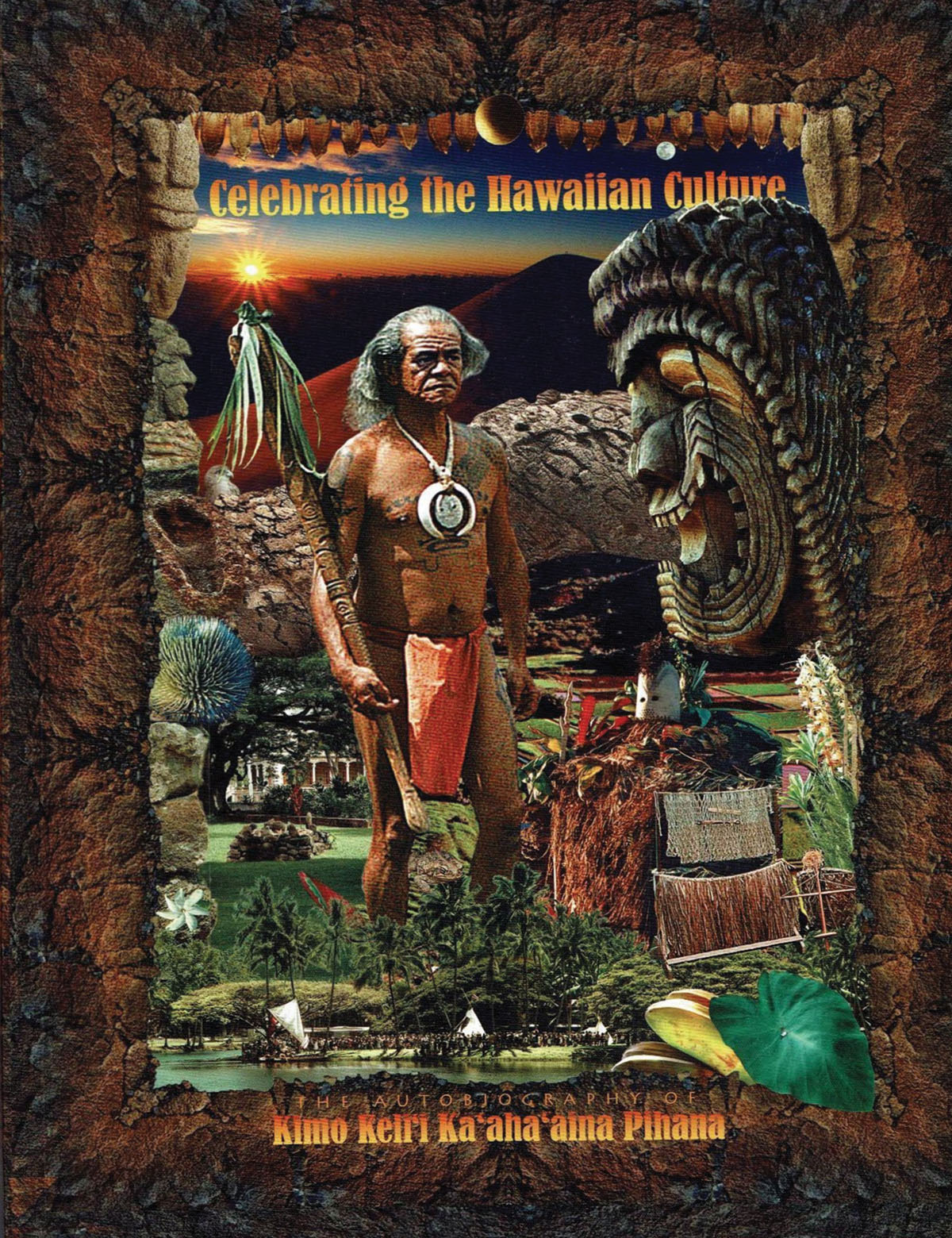
“My solution to the problem of astronomy becoming too insensitive to its responsibility to Hawaiian culture and the environment on Mauna Kea is to put the telescopes on the moon. I became a board member of the International Lunar Observatory association (ILOA), which seriously wants to do that. The board is comprised of scientists and others from many countries including former astronaut John Young.”
In his memoir/autobiography, Celebrating the Hawaiian Culture, self-published in 2014, Kimo gives praise and credit to many other groups of Hawaiians standing up for rights and justice.
“Take notice: when I appear with my native kahiko attire, a native Hawaiian is unmistakably present and observing and honoring the culture. But this native Hawaiian is also looking toward the future and wants the young people of today to learn science and computers and become engineers and astronomers. I have done my part—along with many others, as best as we can—to advance and honor our culture—not to recreate the old culture, but to use it as a guide, a meditation, as we look forward in the 21st century.” ❖
For more information: Kimo Pihana, JKPihana@gmail.com
